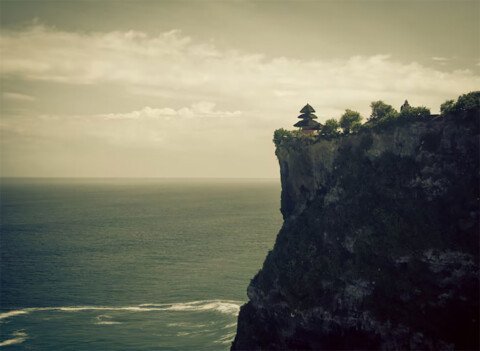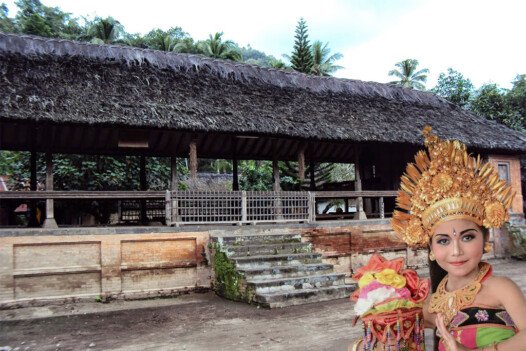Nestled in the northeastern part of Bali, far from the bustling beach clubs and spiritual sanctuaries of Ubud, lies Mount Batur — an active volcano that stands at 1,717 meters (5,633 feet) above sea level. Although not the tallest volcano in Bali (that title goes to Mount Agung), Mount Batur holds a unique place in the hearts of adventurers, nature lovers, and spiritual seekers alike.
So, what exactly makes this mountain Bali’s ultimate adventure challenge? Is it the fiery geological past, the rewarding sunrise hikes, or perhaps the immersive cultural tales that wrap around its crater like a mystical shroud?
Let’s take a deep dive into the various aspects that elevate Mount Batur to its legendary status.
🌄 1. The Majestic Sunrise Trek
For many, the defining feature of Mount Batur is its sunrise trek — a rite of passage for Bali-bound adventurers.
🕓 Early Start, Eternal Memories
The journey typically begins at 2:00 AM. Trekkers gather in the darkness with headlamps, preparing for the 2- to 3-hour ascent. The cool, misty air adds a layer of mystery. As you climb, each step brings a mix of exhaustion and exhilaration.
By 6:00 AM, you reach the summit. The clouds begin to lift, and the first sliver of golden light pierces through the horizon.
🔥 Pro Tip: You’re not just seeing a sunrise. You’re witnessing the sun rising from behind Mount Agung, another of Bali’s sacred volcanoes. The moment is nothing short of cinematic.
🥾 2. Moderate Yet Challenging Trail
Mount Batur is often described as a beginner-friendly volcano, but don’t be fooled — it still demands respect.
🧗 Trail Difficulty
While you don’t need technical climbing gear, the trek involves:
- Uneven volcanic rocks
- Steep inclines
- Loose gravel
- Potential weather changes
It’s a cardio-intensive activity that combines the thrill of elevation with the meditative rhythm of hiking.
🌱 Fitness Level: Moderate. Suitable for beginners with a reasonable fitness level but still offers a challenge for seasoned hikers.
🏞️ 3. Geological Marvel
Mount Batur isn’t just a peak — it’s a caldera complex formed by an enormous eruption over 29,000 years ago.
🌋 A Volcano Within a Volcano
One of the most fascinating aspects is the double caldera structure:
- The outer caldera is 10 km wide.
- Inside it lies the actual cone-shaped Mount Batur, which still smokes today.
This phenomenon has made it a textbook location for volcanologists worldwide.
🧪 Fun Fact: Mount Batur’s last significant eruption was in the year 2000. Since then, minor volcanic activity continues, adding an element of danger and allure.
🌊 4. Lake Batur: The Sacred Mirror
Within the outer caldera lies Lake Batur, the largest lake in Bali.
💧 Myth and Magic
Balinese mythology holds that Lake Batur is the manifestation of the goddess Dewi Danu, the guardian of water. Local villages rely on its waters for farming and irrigation.
The lake’s glassy surface often reflects the mountain and the sky, creating surreal mirror-like visuals that are popular among photographers.
🚣 Things To Do:
- Canoeing or traditional boat rides
- Visiting the floating dock villages
- Relaxing in lakeside cafés
🧘 5. Spiritual Energy and Balinese Belief
For the Balinese, Mount Batur is not just a geographical wonder — it’s a sacred entity.
⛩️ A Spiritual Symbol
In Balinese Hinduism, mountains are considered the seats of gods. Mount Batur, in particular, is home to Pura Ulun Danu Batur, one of Bali’s nine directional temples.
Every year, ceremonies are held on its slopes to honor the volcano’s spirit and to seek protection from eruptions.
🧘♂️ Many visitors report feeling a strange sense of peace and clarity at the summit — as if the mountain clears not only the clouds but also the mind.
🚵 6. An Array of Adventure Activities
If hiking isn’t enough, Mount Batur and its surrounding region offer an adventure buffet.
🚴 Top Outdoor Thrills:
- Mountain biking through lava trails
- ATV rides across black sand landscapes
- Caving through lava tubes and tunnels
- Paragliding from nearby cliffs
- Camping under the stars at the crater rim
Every activity adds a new layer to the Mount Batur experience, whether you’re chasing adrenaline or tranquility.
🍳 7. Volcano-Cooked Breakfast
Yes, you read that right. At the summit, guides often prepare eggs and bananas cooked using volcanic steam.
🥚 Signature Dish: Steam-Boiled Eggs with Banana Wrapped in Banana Leaf
Not only does it taste better after a tough climb, but the experience of eating food prepared by the Earth itself is unforgettable.
🔥 Pro Tip: Some guides even offer coffee brewed on volcanic rocks.
🌐 8. Accessibility and Local Community
Mount Batur is one of the most accessible volcano hikes in Southeast Asia.
🚗 Easy To Reach
Just a 2-hour drive from Ubud or 3 hours from Kuta, you can leave late at night and return by noon — making it a perfect day adventure.
👥 Local Insight: The nearby village of Toyabungkah serves as a base camp. It thrives off eco-tourism, offering:
- Homestays
- Guided tours
- Thermal hot springs
- Cultural performances
Tourism here supports the local economy and helps preserve Balinese traditions.
♨️ 9. Natural Hot Springs
After a demanding trek, reward yourself with a soak in geothermal hot springs fed by the volcanic system.
🛁 Batur Natural Hot Springs and Toya Devasya are two popular spots offering:
- Infinity pools
- Mineral-rich water
- Lake views
- Massages and wellness spas
Relax your muscles while admiring the very volcano you just conquered.
📷 10. Instagram Heaven
Let’s face it — part of the allure of Mount Batur is how photogenic it is.
📸 Top Photo Spots:
- Summit at sunrise
- Smoking crater with steam vents
- Lake reflections
- Lava fields
- Silhouetted hikers against golden skies
With the right lighting and angles, almost every shot looks like a postcard.
🗺️ 11. Eco-Tourism and Sustainability
Over the years, Mount Batur has become a model for sustainable tourism in Bali.
🌿 Community-led initiatives include:
- Reforestation programs
- Clean-up treks
- Responsible tourism education
- Eco-lodges with solar power
Tour operators are increasingly focused on “leave no trace” policies, encouraging visitors to respect the natural and cultural sanctity of the volcano.
🧭 12. Cultural Immersion Opportunities
Beyond the hike, Mount Batur offers a cultural immersion experience unlike any other.
👣 Unique Local Traditions:
- Visiting the ancient Trunyan village, where the dead are laid in bamboo cages under trees
- Watching Barong dance performances that retell volcanic legends
- Participating in Bali Aga rituals, an ancient form of animism-meets-Hinduism
You’re not just climbing a volcano — you’re walking through living heritage.
🔄 13. Every Hike Is Different
Weather conditions change rapidly on Mount Batur. Sometimes you’ll find:
- A crystal-clear sunrise
- Heavy clouds swirling below your feet
- Rainstorms mid-trek
- Dense fog giving a mystical vibe
🎒 Each hike is unique, which makes returning to Mount Batur just as thrilling as the first time.
🌈 14. Ideal All-Year Destination
Unlike some treks that are season-dependent, Mount Batur can be climbed year-round.
🌤️ Dry Season (May–September): Best visibility, cooler nights
🌧️ Wet Season (October–April): Lush greenery, slippery paths but fewer tourists
No matter when you go, there’s always an adventure waiting.
🌐 Conclusion: More Than a Mountain
Mount Batur is more than a trekking destination — it’s a layered experience of geology, culture, spirituality, and adventure. Whether you’re a thrill-seeker, a spiritual pilgrim, a nature lover, or a curious traveler, Mount Batur challenges not only your legs but your perception of what Bali can offer.
So next time someone mentions Bali, think beyond beaches and temples. Think smoke curling from ancient stones, think steaming banana leaves for breakfast, think sunrises that make you question reality.
Think Mount Batur.









